Ratings and reviews are a key indicator of how consumers feel about your brand and your product. They also have a huge impact on conversion, with shoppers who interact with ratings and reviews converting at more than double the rate of those who don’t.
In addition to boosting conversions, user-generated content (UGC) also increases web traffic volumes you drive to your product pages. Our research shows that product detail pages (PDPs) with no reviews account for 60% of all PDPs across the Internet. But these pages only capture 12% of all web traffic. By contrast, PDPs with more than 100 reviews account for 5% of all PDPs. But these pages capture 33% of web traffic.
Factors like review volumes and average rating of course improve traffic volumes. But – in addition – there are some incredibly meaningful nuggets of information you can extract from your review content to further boost SEO and – in turn – eyeballs on your product pages.
Beyond these immediate benefits, analyzing your UGC can also yield valuable insights into how to improve your SEO even further. Insights like:
- What keywords are we missing from our product pages?
- How do we add more keyword-rich content to our product pages?
- How do we improve our rankings on other retailers, like Amazon?
Having the answers to these questions — and taking action on them — can make a huge difference in how you show up in the search engines, and how many shoppers you convert. Fortunately, you can find these answers easily with UGC analytics, so long as you know what to look for.
Read on as we share seven UGC metrics to watch to improve your web presence, both on your own website and that of your retail partners.
1. Top Review Search Terms
The Review Search Report reveals the most popular search terms consumers are entering into the search box on your Review Display.
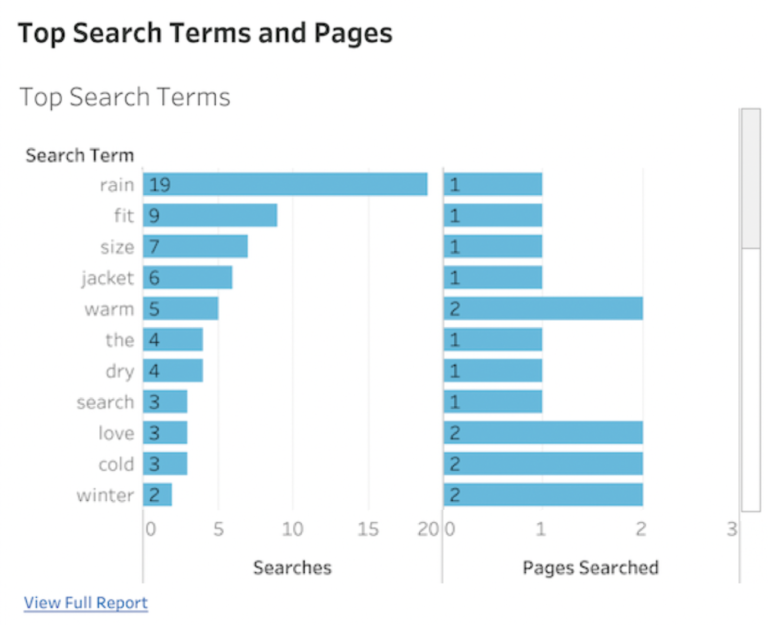
These search terms represent key details that shoppers want to know — some of which may currently be missing from your product description. Adding this information to your product display pages can help shoppers find the information they’re looking for faster. These search terms may spark ideas for product improvement as well.
Regularly review the top search terms and ensure you’re addressing these keywords throughout your product display page to improve your rankings in Google.
2. Products With Zero or Few Reviews
These are products with either no reviews or a low review count.
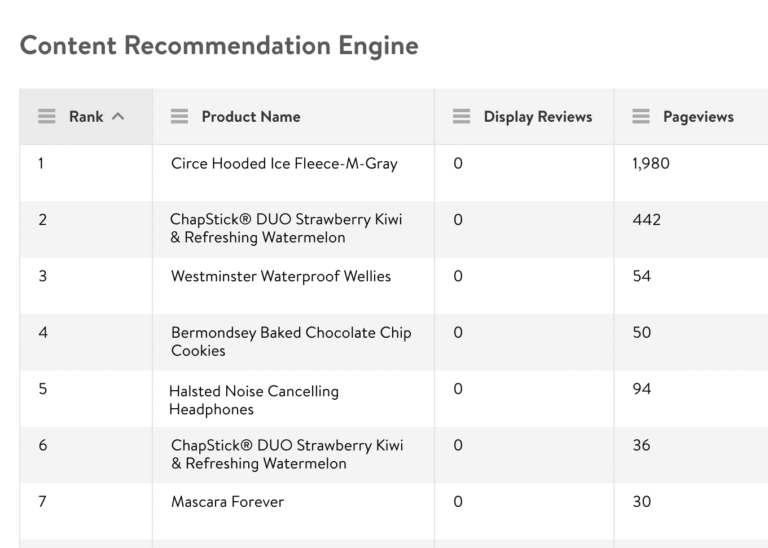
Adding just one review to a product page with zero reviews can lift conversion by 52.2%. Increase that to more than ten reviews, and the conversion rate lifts by 102.9%. Plus - as we already outlined above - Google searchers are considerably less likely to click on a search result that has zero reviews. Pages that have zero or few reviews not only have a tougher time converting customers, but ranking well in Google and catching shopper attention on retailer sites.
Products with zero or few reviews are prime candidates for a dedicated review generation initiative.
3. Review Coverage
Review coverage describes how many of your product pages have at least 1 review. The closer this is to 100%, the better.
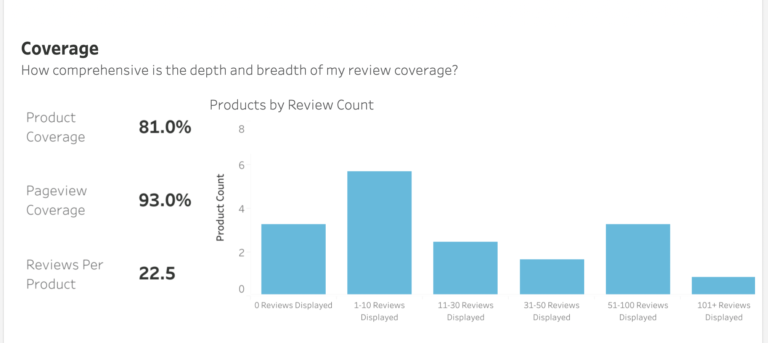
80% of consumers say they’re less likely to buy a given product if it has no reviews. The amount of content on a product page can heavily influence not only the trust a customer has in the product and their likelihood to convert, but also the search engine ranking of the page.
Generate new reviews consistently with a post-purchase email campaigns. As new reviews come in, keep an eye on the top search terms to see what words you can add to your page to grab Google’s attention.
4. Review Sentiment
Sentiment describes how consumers feel about your products, be it positive or negative.
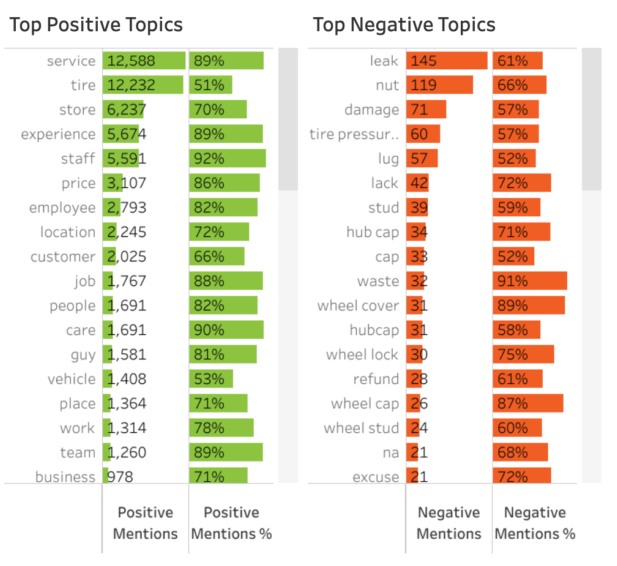
By diving into review sentiment analysis, you can gain insights into what's most important to your customers, and what they love or hate about your products. With that information on hand, you can take action to improve sentiment, conversions, and more.
Consider how people talk about your product to determine the language you should include in product descriptions. For example, features associated with positive sentiment may deserve a more prominent spot in your product description and highlights. On the flip side, if shoppers frequently complain about a particular feature, that may be an opportunity for a product improvement.
5. Q&A Coverage
Q&A coverage describes the amount of Questions & Answers content you have across your site and on each of your product pages.
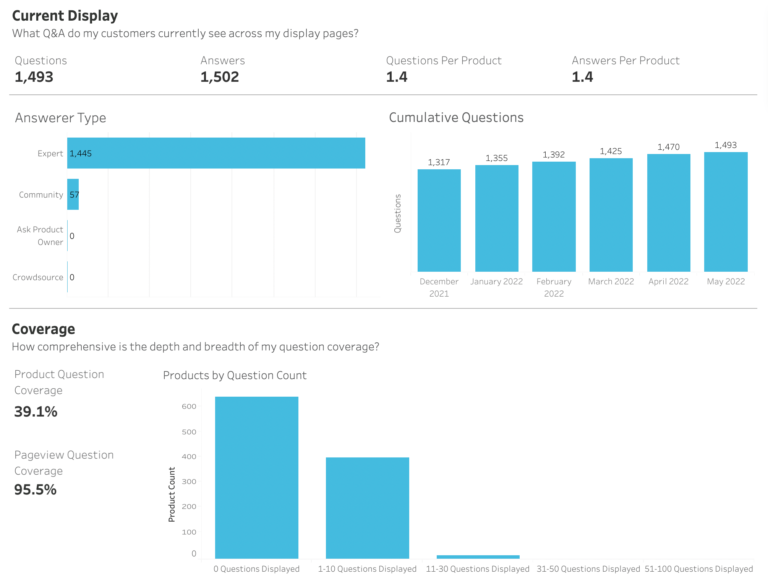
With a stunning 194.2% lift in conversion among visitors who interact with it, Q&A is the most powerful form of UGC. Q&A can answer questions that aren’t covered in your product description, or that perhaps you didn’t realize your customers were asking. Plus, more Q&A means more keyword-rich content for Google on your product pages, which can help boost your visibility in the search engines.
Users aren’t the only people who can submit Q&A; brands can, too. Launch all new products with at least a few seed questions to fill out this space, encourage interaction, and provide more content to Google.
6. Syndication Performance
Syndication performance provides an overview of the review content you share to your retail partners, and the impact those syndicated reviews have on specific partners’ websites.
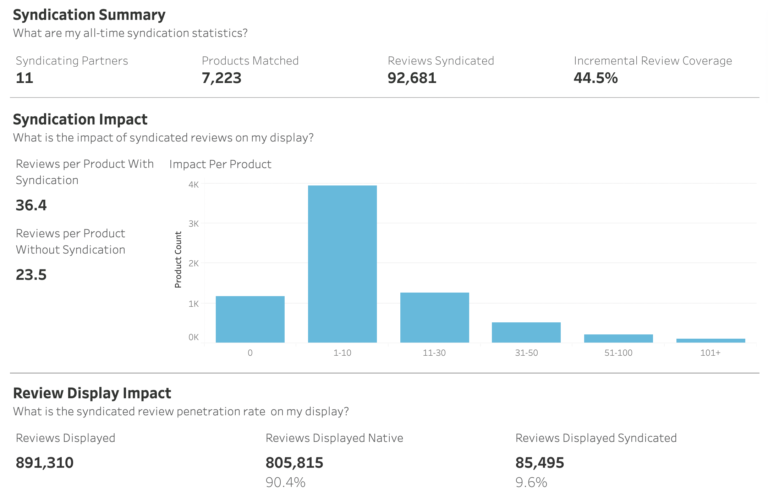
Syndicating your reviews helps to lift conversions for your products on retail partner websites. It also improves the rankings of those product pages in the search results, improving overall visibility for your brand.
By reviewing your syndication performance, you can see which partners are struggling with review coverage, and spin up a dedicated sampling or sweepstakes campaign to generate more reviews for that partner.
7. Share to Amazon Report
At PowerReviews, shoppers can publish the reviews they submit to your site to Amazon with the click of a button. This report shows key metrics related to your Amazon reviews, including the total number of Amazon reviews for your products and the percentage of reviews shared from your site to Amazon, so you can understand how many customers are using this feature.
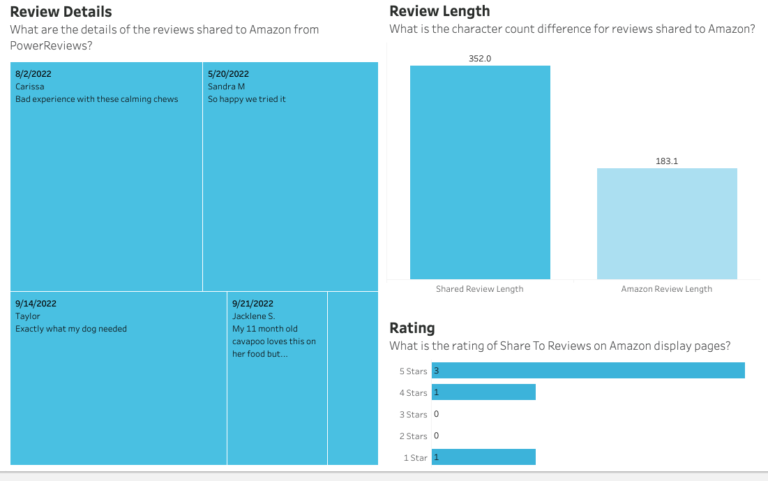
Taking a look at the Review Length and Review details within the report can show you the quality of reviews you collect on your own site versus organically on Amazon. Review length is something consumers care about, with nearly 70% regularly seeking out longer, more detailed reviews.
If your Amazon reviews tend to be shorter than the ones collected on your own website, enabling the Share to Amazon feature can improve your presence on Amazon.
Improve your web presence with UGC analytics
Analyzing your UGC can not only improve your native review collection, but also lead to improved rankings in the search engines — and the increased traffic and conversions that come along with it. Improve your brand presence, both on and off your website, with UGC analytics.
If you’re a current PowerReviews customer, great news: you can access all of these metrics in your reporting for free. Not yet a PowerReviews customer? Learn how we can help you do more with UGC.


